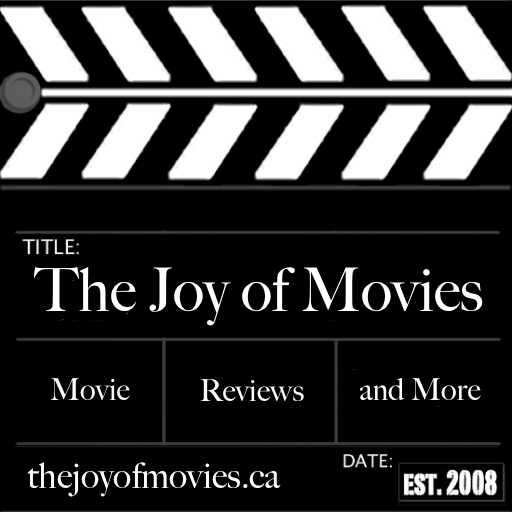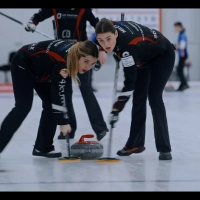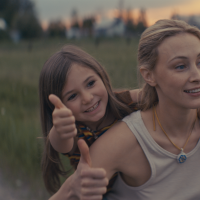Interview: Dean DeBlois, director of ‘How To Train Your Dragon’
By Erin V.
This weekend, the Toronto Screenwriting Conference took place at Ryerson University downtown. From TV to film, screenwriters and authors took to the stage to talk about writing for entertainment.
The one panel in particular that interested me this year was with Dean DeBlois – writer/director of How To Train Your Dragon. After the panel he was gracious enough to take a few minutes to answer some questions for me. The interview is found below, and there will be more coverage of the conference to come later this week. Enjoy!
_____________________________________________________
First off, when were you brought on board to write and direct How To Train Your Dragon? I joined the project in October of 2008, and the film was releasing in March of 2010. So that gave us just about fourteen months to re-conceive it on a story level, and then usher it all the way through animation to the completion of the animation. So that was that, because everything had to be done and fully lit by January 2010, in order to make the final mix.
Now, during the session, you mentioned that sometimes when you’re working on something, because you’ve seen the same scenes so much, you might want to change parts, and you don’t know if it’s because you’re bored of it… Right.

So how do you kind of get around that? I think you have to trust your first reaction to it, and the first reaction of people who were your audience, whether it’s a group of executives or a test audience… however they reacted, never forget it, because it’s so easy to lose track of what truly was entertaining or emotional as it wears down.
Well, when I’ve worked on my own film projects, I find that I work on it so long that I have trouble judging it – and I’ll look at parts like ‘that’s kind of bland…’ but other people seeing it for the first time don’t think so… Yes – you really need to trust your audience in that sense, so that’s one of the really great things and a lot of filmmakers – myself included – dread the test screenings. You know, because you can’t really force the audience to engage the way you hope they will. And unfortunately, a few people pull out their phones and start texting, or going to the bathroom at a key moment, and it’s like ‘No! It’s just about to get good!’ But the general reaction will tell you a lot. Like sometimes you think you have a really great joke, or a really sweet sensitive moment, that don’t play the way you want them to, and suddenly, people are laughing at a moment that you didn’t think was funny, or feeling something for what you thought was just a neutral moment – and you have to be willing and open enough to accept that and go with it – or change it, if it really is a problem.
Ok, so when you came on to How To Train Your Dragon, because it had already been in the process for a little while, was the voice cast already there pretty much? The voice cast was in place – all but Craig Ferguson, we added him, because we needed a comic foil and a friend to the Gerard Butler’s ‘Stoick’ character. And those two guys are friends in real life, and he’s Scottish as well, and we kind of thought that there was such a disparity, where you had on one side there was like the Judd Apatow gang, you know, speaking with their North American accents, and then this Scottish brogue coming from Gerard Butler, which you know, I don’t know what they were thinking at the time, but we thought, well maybe we can make sense of it if we make all of the adults speak with a Scottish brogue – and that could just be the accent of wherever they came from – and then the new generation are the ones that have just grown with their own accent, kind of like what we have here. For example, there’s so many Italian-Canadian families with first generation kids, where their parents still speak with the mother-tongue, and it’s common enough here that we just thought, well, it’s a silly conceit, but we’ll just go with it – we’ll be consistent.
On that note, I’d like touch a bit more on the voice work. How much did you work with the voice cast, and what was it like on this production? Well, we work really intimately with the voice cast – they come in, kind of as needed – usually every few months we would get individual actors to come in and go through any changes that we had in the script. What we tried to do on Dragon, was to get our key actors in the room together, so we could mike them across from each other and let scenes develop. Because we had written them with a certain intent, but we also realized that the one bit of spontaneity that you can get in animation comes from letting the actors play with it a little bit, and sometimes the scenes would take shape just based on how they – knowing their characters – would react to one another. So we would get Gerard Butler miked across from Jay Baruchel, or Jay with Craig Ferguson, or all three of them doing a scene together, and it had kind of a natural timing, and it felt real.
…reactions are going to be different depending how they each said their lines…
And they can step on each other’s lines, which in animation we always try to record lines in isolation, so there’s complete control, there’s no – well you avoid people stepping on lines – but we loved that, because it makes it feel real.
Exactly. And the other element I loved about the film, was John Powell’s score. When was he brought on, and is he on for the next two? Yes, he will be part of number two and three. And, he was brought on around the time that we joined the production actually – and we were great fans of John’s work before. He’s just such a… he’s a very interesting composer. Chris Sanders and I had worked with Alan Silvestri prior on Lilo & Stitch, and he just loves to get the orchestra into a room and record them all together, one take, you know he’s up on the podium conducting… whereas John Powell is very, very methodical, and he’ll create very detailed scores in demo form, in his own studio, and when he goes out to record them, he records everything in isolation. So, all of the brass, all of the strings, male choir, female choir, the timpani and percussion. Everything – all the elements are recorded in meticulous detail, and then arranged in a very specific way, so he’s the chemist with music.
Ok, we have to wrap up, so we have time for just one more quick question – with HTTYD 2 & 3, will you be keeping the same sort of visual style of the world? Yes. Yes, they will continue to be – well, everything’s the same, it’s just going to get better. And we have Roger Deakins, who was our cinematography consultant on the first movie – he’s coming back and I love working with him, because he was the cinematographer for all of the Coen brother’s movies, and The Shawshank Redemption, like amazing, amazing movies that I’ve always admired. So being able to work with someone of his caliber and bringing all of that live-action sophistication and artfulness to the world of animation, it really creates a unique look, and we’re going to continue to do that.
So, thank you for taking the time to speak with me today. Thank you.











